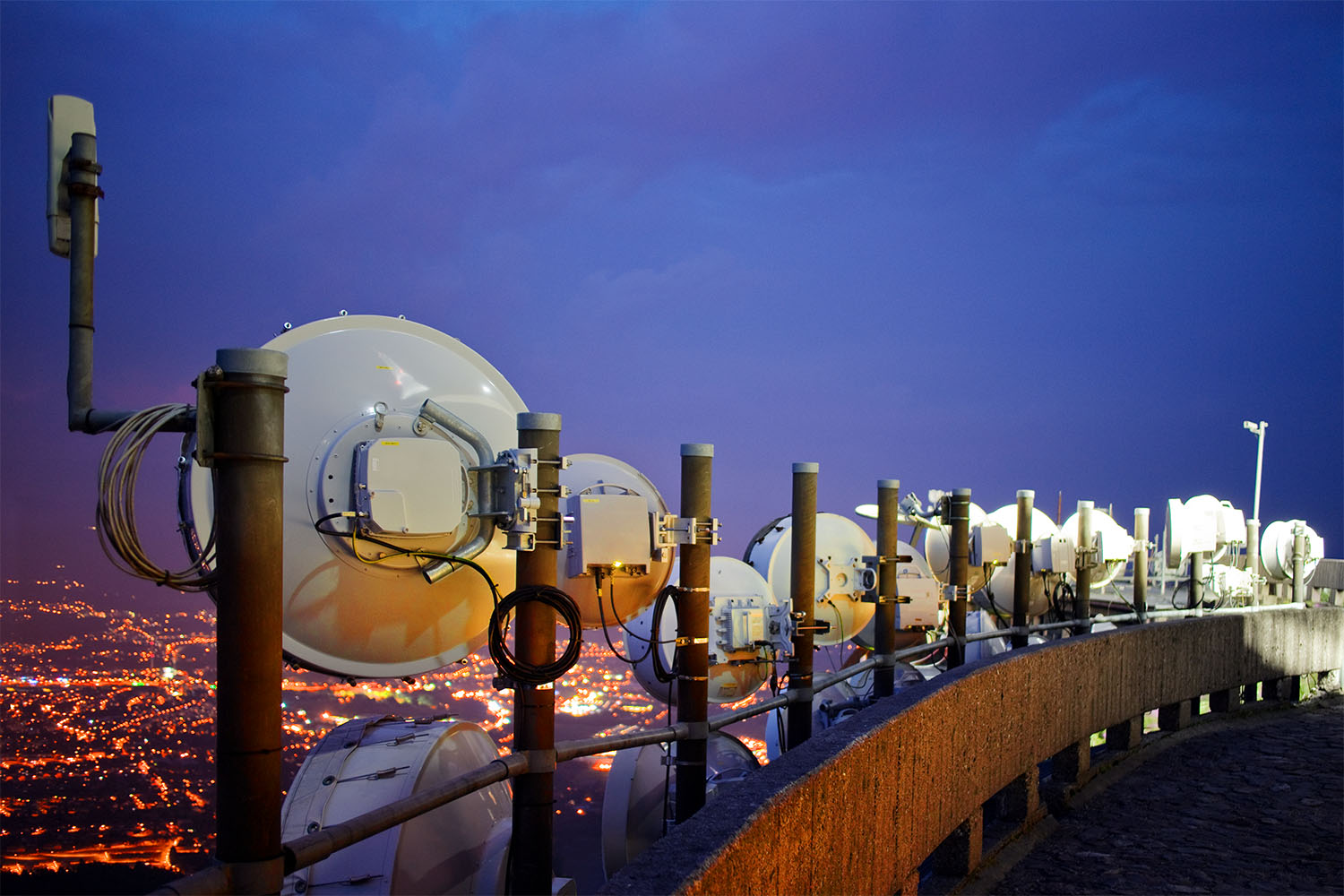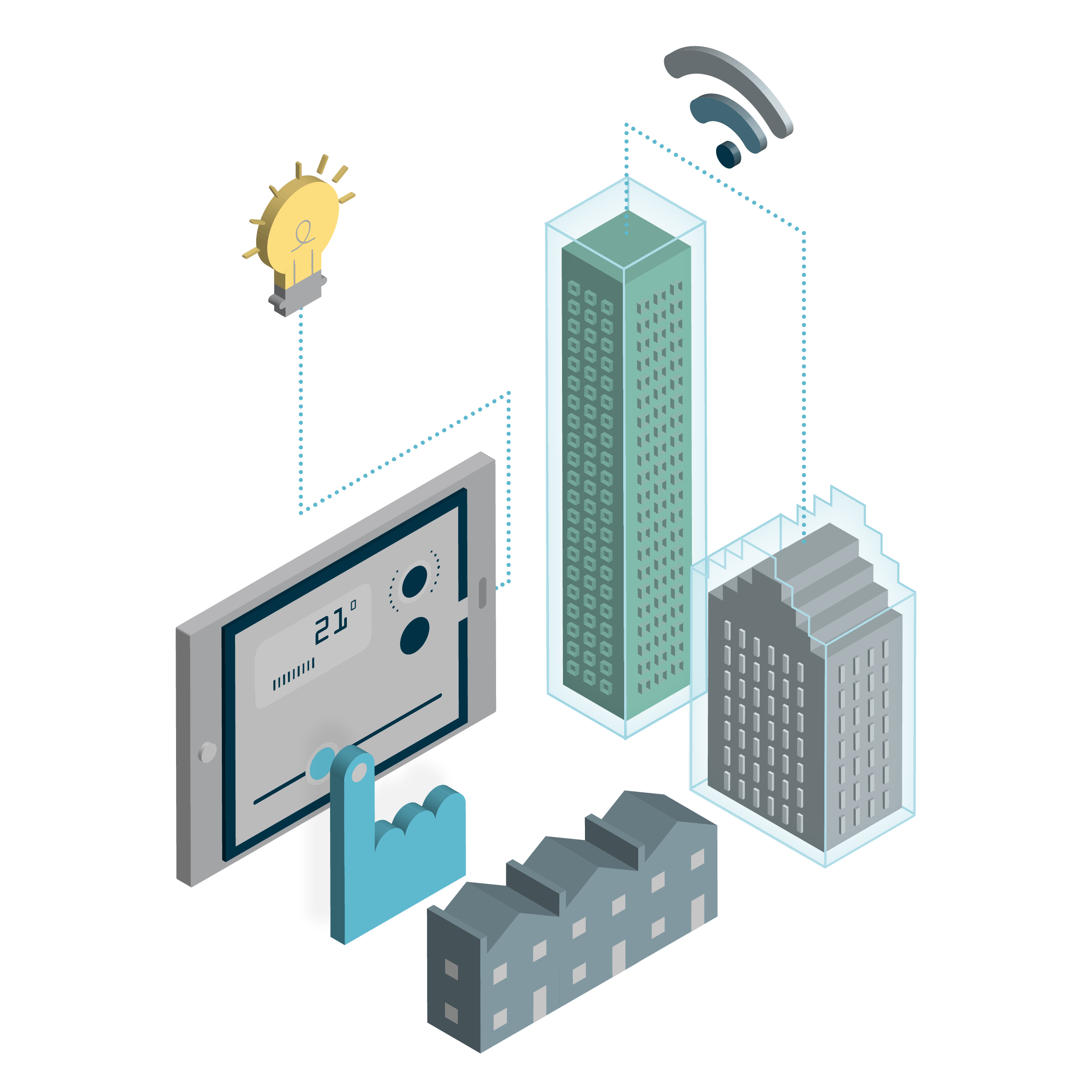How individual buildings can support the digitalisation of an urban environment
Published on 20th April 2021
Our series on how individual buildings can boost a city's 'smartness' looks at the contribution to connectivity, digitalisation and data

Individual buildings are self-contained units operated by a combination of stakeholders, including occupants, owners and building management. But they can nevertheless contribute to making their surrounding city environment smarter. Data, systems and decision-making processes for a particular building can support the wider digital smartness of urban surroundings. And, as noted in our introduction to the series, the flexibility of a building to adapt to shifting demands and patterns of use is a crucial factor in its ability to generate wider community benefits
Flexible and adaptable
The fast life cycles of technology are mismatched to the much longer lifespan of real estate, as we discussed in our joint report, "The New Age of Data in Real Estate", with Nuveen Real Estate. A building that was state of the art at the time of construction will inevitably require technology upgrades during its lifetime. This expectation needs to be integrated into the design of the building and will be critical to "future proofing" it to keep up with advances in technology. As demand for real estate asset types flexes over time, different data points may become important; the systems and sensors to collect them from the building may similarly change; and connectivity may itself evolve as new networks and infrastructure are devised. New materials and even cultural shifts may also drive technology use in the building.
Clearly, anticipating many years in advance how a building might be used and what technology might support its occupants and management in the future is virtually impossible because of as yet unknown advances in technology. The emphasis therefore has to be on flexibility and adaptability of the building, rather than preparedness for specific future requirements.
On the other hand, the smartness of a building can become an area of risk. If an initially smart building cannot adapt as the benchmark for "smartness" progresses, there is a risk that its value will diminish. If a building cannot be retrofitted for future technology or a future use that was not foreseeable at the time it was built, and if the new owner did not pay or plan for that retrofitting to be a possibility, then designers and constructors cannot be held responsible. It is conceivable that initial tenants for a new development who were drawn to the smartness of the premises might seek commitments from the landlord/investor to keep the building up to date with technological developments over time, or other provisions with the effect of allocating the risk of reducing value over time. From the landlord's perspective, provisions may also need to be built into leasehold arrangements to ensure the physical work for upgrades and adaptations can be undertaken.
Standards and interoperability
The adoption of common standards and interfaces between different technologies and platforms certainly facilitates the adaptability of a building, and could make it easier to introduce tech to reflect a change in use or stakeholder needs. Currently, digital infrastructure and the various management systems within a building are often operated by different stakeholders: the occupant might be responsible for cabling and WiFi networks for its own use; the building management might run the floor access systems, and third parties might run systems for the lifts. Siloed systems mean that the full cumulative value of the digital infrastructure – and the data that it generates – may not be being captured.
If a building is to function in an interconnected way with neighbouring buildings and its wider environment, interoperability is a key consideration. This can be facilitated by using a common platform or interface; alternatively, common standards, application programming interfaces and an open approach can enable different platforms to integrate and work together. The latter clearly offers advantages in terms of competition and ensuring that upgrades and adaptations over time do not become hostage to a particular supplier or a particular use. Data portability – still an emerging field – can also facilitate switching between suppliers.
Governance and risk
Interfaces between systems run by different organisations, and collaborations involving data sharing, clearly raise cyber security and other risks. Some of these will be operational risks that can be managed through appropriate technical protocols. But others will have a legal angle, impacting on regulatory compliance, or playing into the distribution of liability between the various stakeholders. Handling personal data is clearly one such example, or responsibility for a data leak, or for the accuracy of shared information.
Governance arrangements support collaboration by defining, from the outset, the rights and obligations of the various parties involved in an interaction, including joining and exit provisions and potentially setting up dispute resolution arrangements. Cybersecurity might be underpinned with commitments to meet certain standards or parameters, and to undergo audits or to update certifications etc. Roles may be defined within the collaboration. Where appropriate, it might also be necessary to define how value generated by the integration project will be allocated, and whether and how it will be shared. Some of these arrangements may cover citywide projects, while others will deal with smaller scale collaboration, perhaps between the management of neighbouring buildings to pool functions or facilities, or between a building's management and local organisations.
Data governance is likely to be a significant aspect of any collaboration involving digital technology. Questions to facilitate sharing data include understanding who collects it, who can access it, what can be done with it, how it should be stored and eventually destroyed. Data portability provisions may also be included (to allow participants to move their data to an alternative platform). Good data governance can be important to secure third parties' trust in a collaborative project, particularly consumers' trust, that can help to drive willingness to participate.
It may be necessary to consider any divergences between a collaborative project's governance policy and the particular governance arrangements that apply to the building. A huge amount of data will be generated across the lifespan of the building, and the building's owners and management may well have their own governance provisions in place (potentially with a long duration to match the building's lifespan).
| Interested in hearing more from Osborne Clarke? Register now for more insights, news and events from across Osborne Clarke > |
Sharing data
There are many opportunities for sharing data about, or generated by, a particular building in order to drive wider benefits for the surrounding urban community. Millions of documents and data points are created and accumulated during the design and build phase. Building information modelling data for a new building could form the basis for a "digital twin" of the building. That digital model of the physical shape of the building – at least the external aspects – could then potentially be transferred into wider digital twins, such as a model of the locality, or of the city.
Once built and occupied, a smart building will continue to generate huge quantities of data. Not all of it may be suitable or useful to share. But some could make a valuable contribution to understanding the bigger urban picture.
For example, data relating to the flow of people into and out of an individual building at various times of the day could feed into models of movement around a city, and provide enhanced detail about its specific locality. Real-time data might be useful for some purposes, including traffic flow management, but historic data is also valuable – for example, for planning capacity for public transport, scheduling timetables, predicting demand etc. Such data could also be useful for logistics networks and planning. For example, it could help to identify when congestion is typically a problem in the area of the building, to help plan the most efficient delivery times. Sharing data in this way clearly has cumulative benefits with proportionately more benefit derived as more buildings share their access data.
Boosting local connectivity
In an urban environment, buildings often contribute to the smartness of their wider environment by hosting communications infrastructure. Although rooftop masts etc. may be physically small and the contribution somewhat passive, the importance of this role for the wider community should not be understated.
The roll-out of the new 5G network in urban areas depends on agreement from landlords to put infrastructure onto their buildings. Valuation provisions in the UK's Electronic Communications Code mean that rent levels for 5G masts and related infrastructure are likely to be lower than for previous telecoms apparatus and infrastructure. This is creating friction in the process of reaching agreement between the infrastructure providers/network operators and landlords for many sites. But against those understandable private interests, the wider community benefit from next generation connectivity is expected to be hugely significant.
As well as faster data transfer to our phones and greater capacity in the network, next generation connectivity is expected to power a huge acceleration for the Internet of Things. Devices will be able to use fast, real time connections to cloud platforms, enabling complex and sophisticated "smart" functionality (such as artificial intelligence and big data analytics) that would currently need significant computing power on the device itself. Smart city systems will themselves be boosted and enabled by these powerful connections. Hosting 5G infrastructure offers a simple but very tangible contribution to the smartness of a city.
Delivering smart cities
As will be discussed in the series, The planning system operates as a gatekeeper for innovation in the urban environment. It is notable in the UK government's White Paper on the Future of Planning that there is a great deal about the digitalisation of the planning process but much less about planning policy promoting and enabling the digitalisation of the built environment and the delivery of smart, connected urban environments. Further progress is needed in relation to standardisation to facilitate interoperability and the contractual frameworks to govern collaboration. But, whether by sharing data to enrich understanding of a building's vicinity, enabling interconnectivity or simply hosting infrastructure, there are numerous ways that individual buildings can contribute to making the wider urban environment smarter.
This infographic summarises our approach to smart cities. If you would like to discuss any of the issues raised in this article or in our infographic, please contact one of the authors or your usual Osborne Clarke contact.






